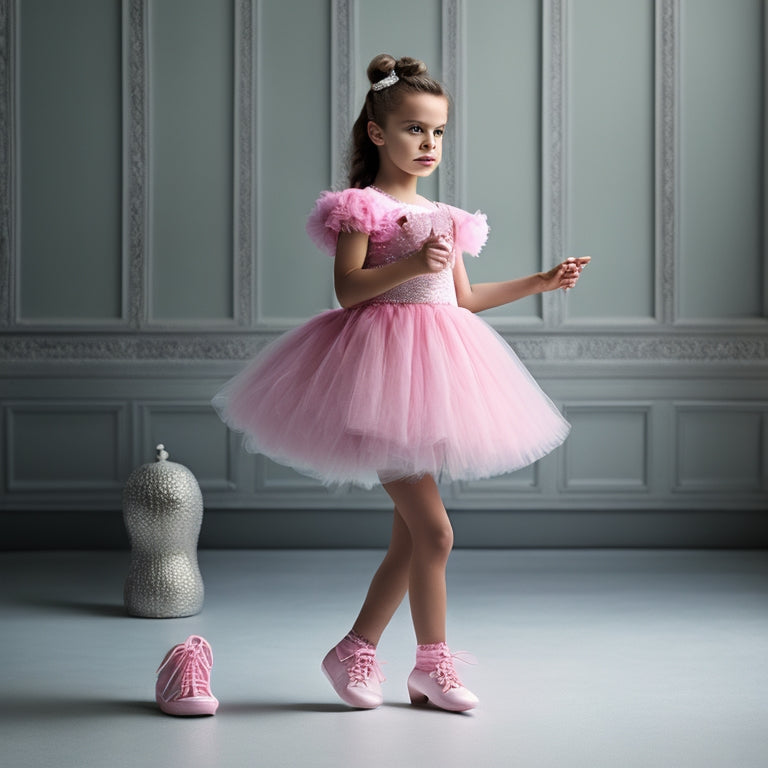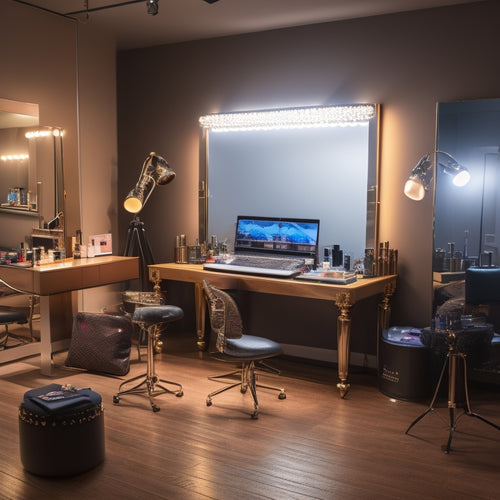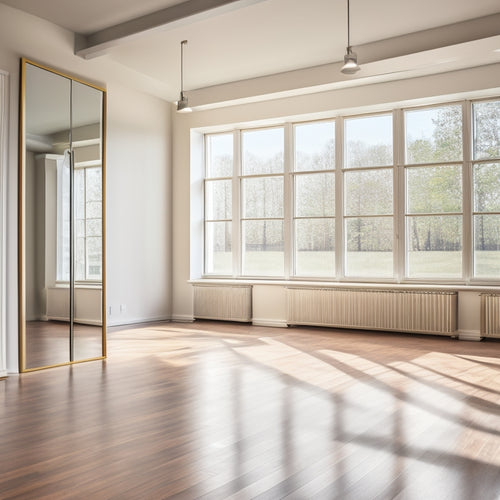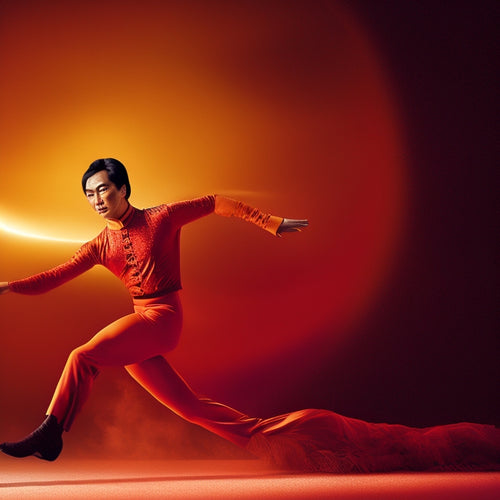
Do Girls Wear Socks With Tap Shoes?
Share
You're wondering if girls wear socks with tap shoes, and the answer is yes, many do! In fact, it's a tradition passed down through generations, influenced by cultural and social factors. Wearing socks with tap shoes can provide benefits like cooler, drier feet and reduced blisters, but may also hinder technique and control. While some professional dancers prefer going sockless for precision, others swear by socks for confidence and comfort. The decision ultimately depends on personal style, occasion, and mastering the art of tap dance. As you explore the world of tap, you'll discover more nuances that can take your skills to the next level.
Key Takeaways
• Many dancers, including girls, follow the tradition of wearing socks with tap shoes, which is influenced by cultural and social factors.
• Wearing socks with tap shoes provides benefits like cooler and drier feet, reduced risk of blisters, and effective moisture management.
• However, wearing socks can also have disadvantages, such as friction, blisters, and reduced sensitivity and control over taps.
• Some professional tap dancers, including girls, prefer to go sockless to achieve improved precision and control over their taps.
• Ultimately, whether to wear socks with tap shoes depends on personal preference, comfort, and the specific needs of the dancer.
Tap Shoes: A Necessity in Dance
When you step into a dance studio, you'll quickly realize that tap shoes are an indispensable part of the dance landscape.
As you gaze around, you'll notice dancers of all levels donning these iconic shoes, their metal plates clicking out rhythms that echo through the room.
But tap shoes are more than just a vital symbol - they're a reflection of a rich cultural heritage that's often forgotten.
From their origins in African American and Irish step dancing to their golden age in Hollywood musicals, tap shoes have played a significant role in shaping American cultural identity.
Their history may be forgotten, but their cultural significance remains, inspiring new generations of dancers to slip on a pair and create their own rhythmic magic.
Socks and Tap Shoes: A Tradition
As you lace up your tap shoes, you're likely to notice that many dancers wear socks with them, a tradition that's been passed down through generations of tappers. This cultural phenomenon has significant historical significance, with roots tracing back to the early days of tap dancing.
The practice of wearing socks with tap shoes has been influenced by various cultural and social factors, including the need for comfort, flexibility, and expression. As a dancer, you're not just following a tradition, but also embracing the cultural influence that has shaped the art form.
Benefits of Wearing Socks Inside
By slipping on socks with your tap shoes, you'll find that your feet stay cooler and drier, reducing the risk of blisters and discomfort during long practice sessions or performances.
This is due to the effective moisture management provided by the socks, which helps to wick away sweat and keep your feet dry. As a result, you'll experience a significant decrease in blister formation, allowing you to focus on perfecting your taps without distraction.
By wearing socks, you'll enjoy a more comfortable and confident performance, free from the worries of blisters and discomfort. This is especially important for dancers who require freedom of movement and expression.
With socks, you can tap your way to success without any hindrances.
Disadvantages of Sock Usage Explained
You might be surprised to find that wearing socks with tap shoes isn't always the perfect solution, as they can actually hinder your technique and overall performance.
For instance, socks can cause friction, leading to Blister Blues - painful and unwanted souvenirs from your tap dance practice.
Additionally, socks can also increase the likelihood of Sock Tantrums, where your socks bunch up or slip down, distracting you from your performance. This can be frustrating and affect your confidence.
Furthermore, socks can reduce the sensitivity and control you have over your taps, making it more challenging to execute complex rhythms and steps.
Professional Dancers Weigh In
As you explore the world of professional tap dancing, you'll find that many experts agree on one thing: going sockless is the way to go.
Professional tap dancers, including Tony Award-winning choreographer Savion Glover, swear by going sockless, citing improved precision and control over their taps as the primary reason for their preference.
This preference is rooted in the industry pressures to perfect their craft, where even the slightest misstep can affect their reputation within the dance hierarchies.
By ditching the socks, dancers can better feel the taps and make the necessary adjustments for a flawless performance.
It's a choice that's not just about aesthetics, but about mastering the art of tap dancing.
Comfort Vs. Control in Tap
When you slip into your tap shoes, you're likely thinking about the perfect balance between comfort and control. You want to feel secure and supported, but you also need the freedom to move your feet with precision.
As you prepare to tap your way across the floor, remember that a supportive fit, freedom of movement, and ankle stability are key to mastering your craft.
Supportive Fit Matters
A snug, supportive fit is crucial in tap shoes, as it allows for the best control and comfort, enabling dancers to execute complex rhythms and movements with precision and confidence. When your shoes fit well, you'll experience proper alignment, which means your feet will be positioned correctly, allowing for optimal movement and control. This, in turn, provides foot freedom, giving you the ability to move with ease and precision.
| Comfort | Control |
|---|---|
| Allows for proper alignment | Enables precise movement |
| Provides foot freedom | Enhances overall control |
| Boosts confidence | Allows for complex rhythms |
Freedom of Movement
You can't execute intricate tap steps or rhythms if your shoes restrict your foot movement, which is why freedom of movement is essential in tap dancing.
A shoe that allows for a full flexibility range is vital, enabling you to move freely and effortlessly. When your shoes provide the right amount of flexibility, you can focus on perfecting your technique and expressing yourself through movement.
This, in turn, enhances your overall movement flow, allowing you to glide across the floor with confidence. With unrestricted movement, you can explore a wide range of tap styles, from lively rhythms to subtle nuances, and truly express yourself through the art of tap dancing.
Ankle Stability Counts
Your ankles need to be stabilized in a way that balances comfort and control, as excessive movement in the ankle joint can throw off your timing and overall technique. When you're tapping, you want to focus on the rhythm, not adjusting your feet.
To achieve this balance, consider the following:
-
Ankle rolls: Practice ankle rolls to loosen up your joints and improve flexibility. This will help you move smoothly and prevent stiffness.
-
Footwork fundamentals: Master the basics of footwork, such as heel-toe action and weight transfer. This will help you maintain control and stability.
-
Proper fitting shoes: Wear shoes that fit comfortably, providing adequate support without restricting your movement. This will help you feel secure and confident in your tapping.
The Role of Socks in Performance
Tap shoes' thunderous beats and rhythmic taps rely on socks to provide the necessary grip, allowing performers to execute intricate footwork with precision and confidence.
As you prepare to take the stage, you understand the importance of sock etiquette. You know that the right socks can make all the difference in your performance, helping you to focus on the music and the movement rather than worrying about your feet.
But what about performance anxiety? You've spent hours rehearsing, yet you still feel those familiar butterflies in your stomach. Remember, your socks are your allies, providing the necessary comfort and support to help you shine.
With the right socks, you'll be free to focus on the music, letting your passion and creativity shine through.
Different Styles, Different Rules
From jazz to Broadway, each style of tap dance has its unique requirements, and the socks that complement them are no exception. As you explore the world of tap, you'll discover that different styles have distinct cultural norms and expectations.
Here are three ways different tap styles influence sock choices:
-
Heel height: In jazz and musical theater, high heels are common, so you'll often wear knee-high socks to maintain modesty and comfort.
-
Fabric and texture: For rhythmic and hip-hop tap, you may prefer moisture-wicking socks for high-energy performances.
-
Color and pattern: In Broadway-style tap, bold, bright socks can add a touch of personality to your performance, allowing for personal expression within the traditional framework.
Making the Right Choice for You
Now that you've examined the various styles of tap dance and their corresponding sock requirements, it's time to ponder your personal preferences and needs.
As you weigh your options, remember that confidence comes from within. Choose the socks that make you feel empowered and comfortable. Don't be swayed by external expectations; listen to your inner voice. Consider your personal style, the occasion, and your own unique flair.
Frequently Asked Questions
Can I Wear Socks With Tap Shoes for Outdoor Performances?
As you step into the spotlight, you wonder, "Can I wear socks with tap shoes for outdoor performances?" Absolutely, but consider stage preparation and weather conditions; a smooth, dry surface is key to a flawless performance, so dress accordingly.
Are There Specific Socks Designed for Tap Dancing?
You'll find tap dancing socks made from breathable materials like mesh or cotton, designed to keep your feet cool and dry. Look for socks with a seamless toe seam to prevent blisters and irritation.
Do Socks Affect the Sound Quality of Tap Shoes?
When you wear socks with tap shoes, you're affecting sound quality. Socks can increase sound absorption, dampening frequency resonance, making your taps sound muffled.
Can I Wear Tap Shoes Without Socks for Certain Dance Styles?
You crave freedom of expression, and tap shoes can be a powerful tool for self-expression. Ditching socks can unleash style versatility, allowing you to fully embody the rhythm, but beware: blisters and discomfort may ensue.
Are There Any Health Benefits to Wearing Socks With Tap Shoes?
As you dance, wearing socks with tap shoes provides essential foot support and ankle stability, reducing your risk of injuries and allowing you to move freely, with confidence and expression.
Related Posts
-

Elevate Your Dance Makeup Business Online
You're one step away from taking your dance makeup business global. A professional online presence is key, with 75% o...
-

Tips and Tricks for Collapsible Ballet Bar Installation
To install your collapsible ballet bar, start by gathering essential tools like a drill, level, and measuring tape. M...
-

Captivating Insights: Maos Last Dancer Analysis
Li Cunxin's memoir, Mao's Last Dancer, is a compelling narrative that delves into the intersection of art, identity, ...


